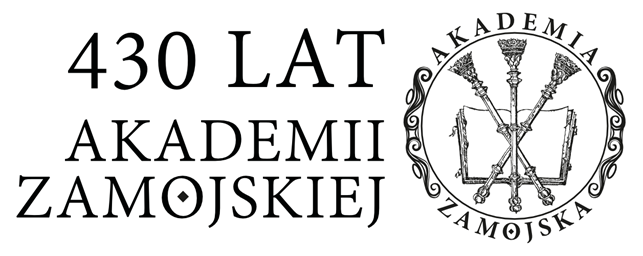Antoszek J., Sobczyk W. (2004): Możliwości uzyskiwania alternatywnych dochodów poprzez rozwój agroturystyki na obszarach wiejskich Lubelszczyzny. [w:] E. Pałka (red.): Alternatywne źródła dochodów gospodarstw rolnych, Kielce, Instytut Geografii Akademii Świętokrzyskiej im. Jana Kochanowskiego w Kielcach.
Bański J. (1999): Obszary problemowe w rolnictwie Polski. Wrocław, „Continuo”.
Bański J. (2007): Geografia rolnictwa Polski. Warszawa, Polskie Wydawnictwo Ekonomiczne.
Bański J. (2008): Wiejskie obszary sukcesu gospodarczego. Studia Obszarów Wiejskich, t. 14, Warszawa, Komisja Obszarów Wiejskich, Polskie Towarzystwo Geograficzne, Zespół Badań Obszarów Wiejskich, IGiPZ PAN.
Bański J. (2011): Wieś w badaniach geograficznych — ewolucja badań i przegląd koncepcji obszaru wiejskiego. [w:] M. Halamska (red.): Wieś jako przedmiot badań naukowych na początku XXI wieku, Warszawa, Wydawnictwo Naukowe Scholar.
Bogucki J., Woźniak A., Zątek W. (1995): Proekologiczne tendencje w turystyce. Agroturystyka i ekoturystyka. [w:] S. Bosiacki (red.): Turystyka i rekreacja jako czynnik integracji europejskiej, Poznań, WTiR AWF.
Charakterystyka obszarów wiejskich w 2005 r. (2006) Olsztyn, GUS, Urząd Statystyczny w Olsztynie.
Dębniewska M., Tkaczuk M. (1997): Agroturystyka. Koszty, ceny, efekty. Warszawa, Poltext.
Drzewiecki M. (1998): Pojęcie turystyki wiejskiej. „Turyzm”, nr 8(1), s. 21–27.
DOI: https://doi.org/10.18778/0867-5856.8.1.02
Duczkowska-Małysz K. (2007): Obszary wiejskie — przestrzeń problemów czy przestrzeń cywilizacyjnej szansy Europy — z uwzględnieniem zmian modelu rolnictwa europejskiego i wzrostu rangi wsi w Europie. VI Europejski Kongres Odnowy Wsi, Kamień Śląski.
Eurostat Regional Yearbook 2010. (2010) Eurostat Statistical Books, Luxembourg, Publications Office of the European Union.
Grykień S. (2006): Możliwości rozwoju agroturystyki na Ziemi Kłodzkiej. [w:] E. Pałka (red.): Gospodarka wielofunkcyjna (ze szczególnym uwzględnieniem obszarów górskich), Kielce, Instytut Geografii Akademii Świętokrzyskiej im. Jana Kochanowskiego.
Jansen-Verbeke M. (1990): Znaczenie turystyki na terenach wiejskich w Europie. „Problemy Turystyki”, nr 47/48 (1/2), s. 36–48.
Kurek W. (red.) (2007): Turystyka. Turystyka, Warszawa, Wydawnictwo Naukowe PWN.
OECD Regional Typology. (2010), Directorate for Public Governance and Territorial Development, [dostęp: 2012.02.10], [@:] http://www.oecd.org/gov/regional-policy/42392595.pdf.
Pałka E. (2010): Pozarolnicza działalność gospodarcza w indywidualnych gospodarstwach rolnych województwa świętokrzyskiego. Kielce, Wydawnictwo Uniwersytetu Humanistyczno-Przyrodniczego Jana Kochanowskiego.
Rakowska J., Wojewódzka-Wiewiórska A. (2010): Zróżnicowanie przestrzenne obszarów wiejskich w Polsce — stan i perspektywy rozwoju w kontekście powiązań funkcjonalnych. Warszawa, Ekspertyza wykonana na zamówienie Ministerstwa Rozwoju Regionalnego.
Siemiński J.L. (1996): Koncepcje rozwoju obszarów wiejskich w procesie transformacji ustrojowej Polski lat dziewięćdziesiątych. [w:] M. Kozakiewicz (red.): Wieś i rolnictwo w badaniach społeczno-ekonomicznych. Księga jubileuszowa IRWiR PAN lata 1971–1996, Problemy Rozwoju Wsi i Rolnictwa, Warszawa, PAN. IRWiR.
Strategia rozwoju rolnictwa i obszarów wiejskich na lata 2007–2013 (z elementami prognozy do roku 2020). (2005), Warszawa, Ministerstwo Rolnictwa i Rozwoju Wsi.
Szromek A.R. (2012): Wskaźniki funkcji turystycznej. Koncepcja wskaźnika funkcji turystycznej i uzdrowiskowej. Monografia/[Politechnika Śląska], t. 362, Gliwice, Wydawnictwo Politechniki Śląskiej.
Warszyńska J., Jackowski A. (1978): Podstawy geografii turyzmu. Warszawa, Państwowe Wydawnictwo Naukowe.
Wyrwicz E. (1997): Agroturystyka szansą wsi. [w:] T. Burzyński (red.): Lokalna polityka turystyczna i marketing, Kraków, Instytut Turystyki.
Zegar J.S. (2002): Kwestia dochodów chłopskich — część I. „Ubezpieczenia w Rolnictwie. Materiały i Studia”, nr 1 (13), s. 22–42.



 English
English
 Język Polski
Język Polski




